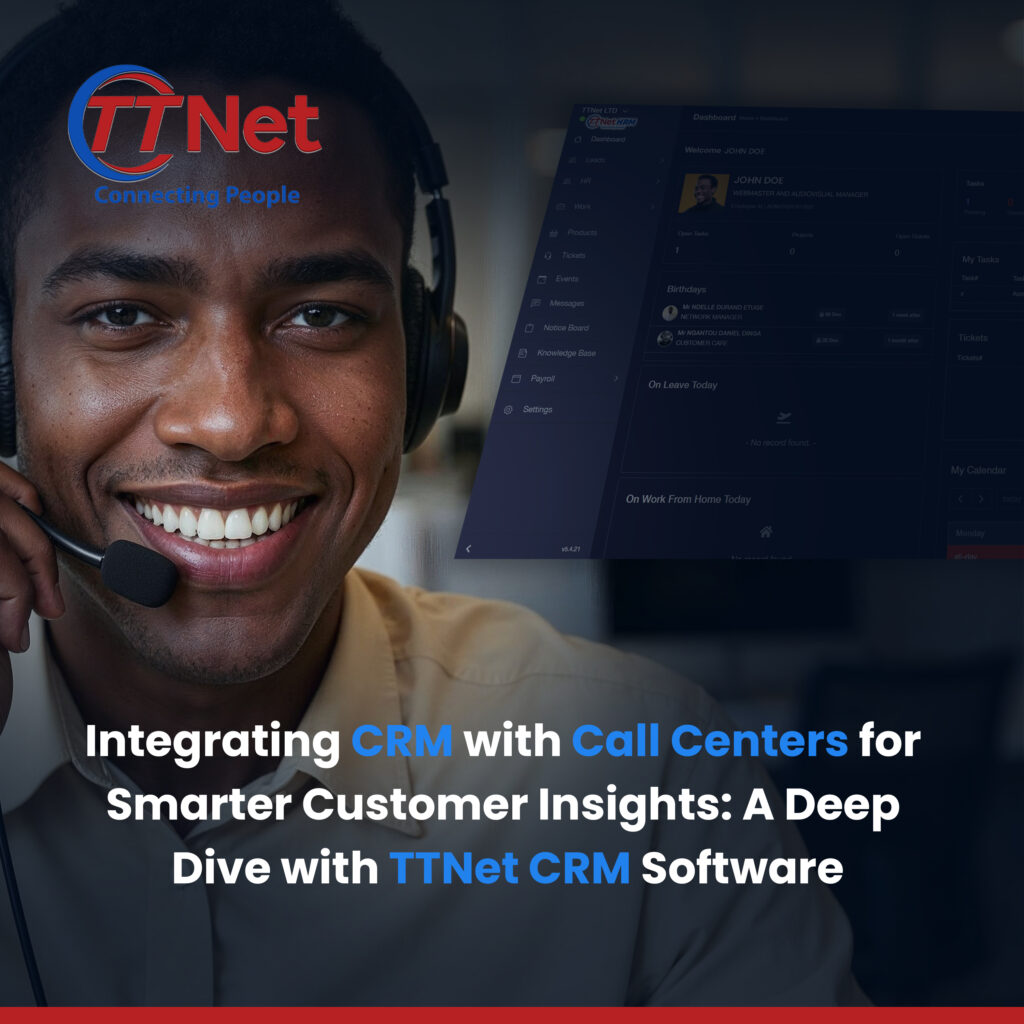
In today’s hyper-competitive business landscape, customer experience (CX) is the ultimate differentiator. Companies that prioritize personalized, efficient, and data-driven interactions are the ones winning customer loyalty. But how do businesses turn everyday customer service interactions into actionable insights? The answer lies in integrating Customer Relationship Management (CRM) software like ttnet CRM with call center operations.
This guide explores how merging CRM systems with call centers unlocks smarter customer insights, streamlines workflows, and elevates CX. We’ll also highlight why ttnet CRM is a standout choice for businesses aiming to bridge this gap.
Why CRM-Call Center Integration Matters
Call centers are often the frontline of customer interactions, handling inquiries, complaints, and support requests. However, without a centralized system to track these interactions, valuable data gets siloed, leading to missed opportunities for personalization and efficiency.
CRM software, on the other hand, is designed to consolidate customer data purchase history, preferences, past interactions, and more into a single platform. When integrated with call centers, agents gain real-time access to this information, enabling them to resolve issues faster, anticipate needs, and deliver hyper-personalized service.
For example, imagine a customer calls about a delayed order. With CRM integration, the agent instantly sees the customer’s order history, previous complaints, and even their preferred communication channel. This context transforms a routine call into a tailored experience, boosting satisfaction and loyalty.
Key Benefits of Integrating ttnet CRM with Call Centers
1. Unified Customer View
ttnet CRM aggregates data from multiple touchpoints (email, social media, phone calls) into a single profile. When integrated with call center software, agents no longer waste time switching between systems to piece together a customer’s story.
-Real-Time Data Access: Agents view live updates, such as recent purchases or unresolved tickets, during calls.
-Historical Context: Past interactions (e.g., complaints resolved, promotions offered) inform smarter responses.
2. Personalized Customer Interactions
Customers expect brands to “know” them. With ttnet CRM, agents can:
– Address callers by name and reference past interactions.
– Recommend products based on purchase history.
– Adjust communication style to match the customer’s preferences (e.g., formal vs. casual).
3. Streamlined Workflows & Efficiency
Manual data entry and disjointed systems slow down call centers. Integration automates repetitive tasks:
-Automatic Call Logging: Calls are recorded in the CRM, including notes and outcomes.
– Screen Pop-Ups: Customer profiles automatically appear when calls are routed.
– AI-Powered Insights: ttnet CRM’s analytics tools flag trends (e.g., frequent complaints about a product) to guide agent responses.
4. Enhanced Reporting & Analytics
CRM integration turns raw call data into actionable insights:
– Track metrics like average handle time, first-call resolution, and customer satisfaction (CSAT).
– Identify common pain points (e.g., billing issues) to improve processes.
– Forecast call volumes and optimize staffing with ttnet CRM’s predictive analytics.
5. Improved Agent Performance
Empowered agents are productive agents. With CRM integration:
– Training is faster, as new hires access centralized data.
– Managers use CRM dashboards to monitor performance and provide targeted coaching.
– AI-driven scripts guide agents through complex scenarios.
How to Integrate ttnet CRM with Your Call Center: A Step-by-Step Guide
Step 1: Assess Your Needs
Identify gaps in your current setup. Do agents lack customer context? Is data scattered across platforms? Define goals like reducing handle time by 20% or increasing CSAT scores.
Step 2: Choose Compatible Call Center Software
Ensure your call center solution (e.g., Five9, Genesys, or in-house systems) integrates seamlessly with ttnet CRM via APIs or pre-built connectors.
Step 3: Configure Data Sync
Map CRM fields (e.g., contact details, interaction history) to call center data. ttnet CRM’s flexible API allows custom workflows, such as triggering follow-up emails post-call.
Step 4: Train Agents
Roll out training sessions focused on:
– Navigating the integrated system.
– Using CRM data to personalize calls.
– Leveraging automation (e.g., auto-logging calls).
Step 5: Test & Optimize
Run pilot tests with a small team to identify glitches. Use ttnet CRM’s analytics to refine processes before full deployment.
Step 6: Monitor & Iterate
Continuously track KPIs and gather agent feedback. ttnet CRM’s reporting tools make it easy to spot trends and adjust strategies.
Best Practices for Successful Integration
– Prioritize Data Security: Ensure compliance with regulations like GDPR. ttnet CRM offers encryption and access controls to protect sensitive data.
– Start Small: Integrate one feature at a time (e.g., screen pop-ups) before expanding.
– Foster Collaboration: Involve IT, customer service, and sales teams in planning.
Why Choose ttnet CRM for Call Center Integration?
– AI-Driven Analytics: Predictive insights help agents anticipate needs.
– Omnichannel Support: Sync data from phone, email, chat, and social media.
– Scalability: Adapts to businesses of all sizes, from startups to enterprises.
– Automation Tools: Reduce manual tasks with workflows and chatbots.
Overcoming Integration Challenges
– Data Silos: ttnet CRM’s unified platform breaks down barriers between departments.
– Resistance to Change: Foster buy-in with training and highlight efficiency gains.
– Technical Hurdles: Leverage ttnet’s 24/7 support team for seamless integration.
Conclusion
Integrating ttnet CRM with your call center isn’t just a tech upgrade it’s a strategic move to future-proof customer service. By unifying data, empowering agents, and unlocking actionable insights, businesses can turn every call into an opportunity to delight customers and drive growth.
Ready to transform your call center? Explore ttnet CRM’s integration capabilities today and start delivering smarter, faster, and more personalized customer experiences.
FAQ
Q: How long does integration take?
A: Most businesses complete the process in 4–8 weeks, depending on complexity.
Q: Can ttnet CRM integrate with cloud-based call centers?
A: Yes! It supports integration with leading cloud solutions like Amazon Connect and Twilio.
Q: Does ttnet CRM offer AI tools for call centers?
A: Absolutely. Features include sentiment analysis, chatbots, and predictive routing.
Q: What if we use an on-premise call center system?
A: ttnet CRM offers hybrid integration options for on-premise and cloud setups.
Call to Action
Upgrade your call center’s capabilities with ttnet CRM. [Contact us] for a demo or download our integration guide to get started!

